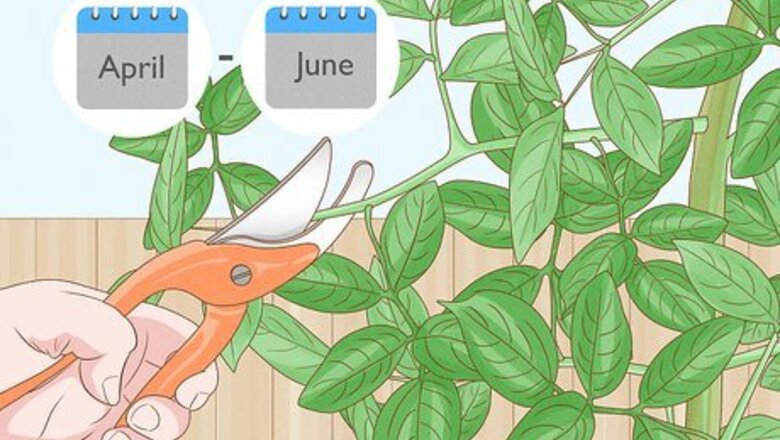
views
Pruning a Honeysuckle Shrub
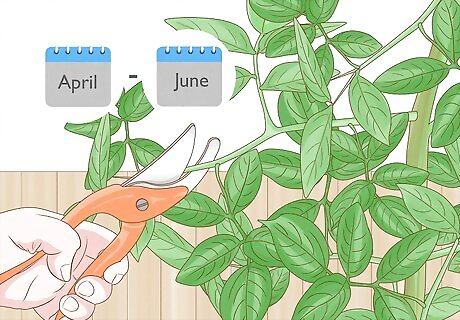
Prune the bush between April and June. It’s best to wait until after the flowering season to ensure that the branches are producing blooms. After the plant blooms, look for branches that didn't produce any leaves or flowers. Avoid trimming the plant during the blooming season, as this can halt growth and cause the flowers to wilt prematurely. Disinfect your pruning shears with rubbing alcohol or bleach before using them to reduce the spread of pests and diseases.
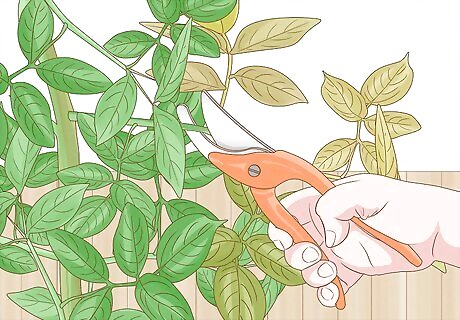
Remove any branches that are dead, damaged, or diseased. Look around the bush for any dead branches that have no leaves or didn’t produce blooms. Make note of areas where branches have snapped or bent. Around the bottom of the plant, look for any branches that have bugs on them or have wilted leaves. Cut infected and broken branches before “shaping” the bush by removing healthy branches.
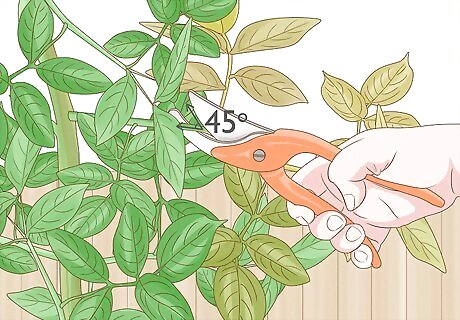
Hold the pruning scissors at a 45-degree angle. Cutting at an angle helps water run off the end and prevents the chances of stem rot. Try not to cut branches straight across, as this can kill the rest of the branch because water will pool on the surface, and it invites pests to burrow into the branches. Always use sharp pruning scissors or long-handled loppers to prevent minuscule cracks from forming in the branches.
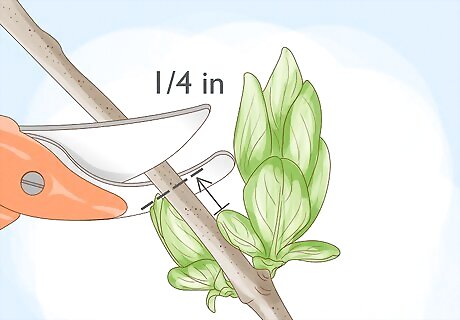
Cut the branches ⁄4 in (0.64 cm) in front of a bud. Leaving a tiny bit of the old branch will encourage regrowth. To find a bud, look for an area where a leaf or another branch meets the branch that you want to cut. This is an area where growth occurs. If any part of the branch is extremely damaged or diseased, cut it back to a healthy main branch at the center of the bush, also called a “parent branch.”

Remove a few branches from the middle to increase light and airflow. Select some of the long, healthy stems in the middle portion of the bush, and prune them to a bud near the center of the bush. This will allow more sunshine and air to penetrate into the middle and lower part of the bush, encouraging further growth. Avoid removing more than ⅓ of the healthy branches on your bush at any time, even if it is overgrown. If you have a lot of long branches at the top of the bush, you may want to trim some of those to the center of the bush. This can also increase the amount of sunshine that reaches the lower part of the shrub.
Maintaining a Honeysuckle Vine
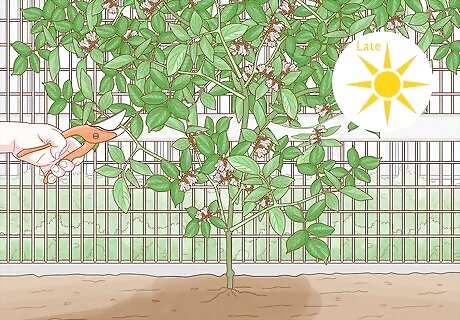
Prune the vine lightly in the late summer to shape it. Honeysuckle vines can grow quickly and spread out quite a bit during the blooming season. After the season is over, re-shape the plant to a more manageable size. During the first few years of growing a honeysuckle vine, refrain from cutting more than 1/3 of the stems. Cutting too many stems off of the plant can cause it to die. Disinfect pruning shears with rubbing alcohol or bleach to reduce the spread of pests and diseases.
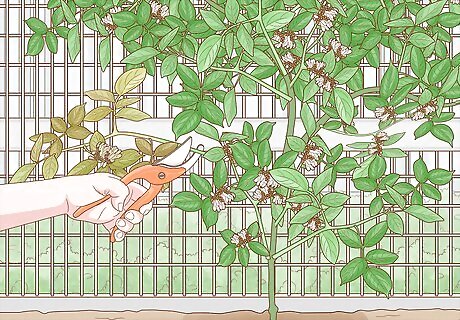
Pull off or trim any dead stems and wilted flowers before pruning. Use your hands or pruning scissors to remove any remaining brown leaves or flowers from the vine before you begin to shape it. This will give you a better idea of the size and shape of your vine and can draw your attention to areas where the vine needs more water, sunlight, or airflow. If one area has a lot of dead leaves, prune around the area with your scissors to increase light and air flow to that part of the vine.
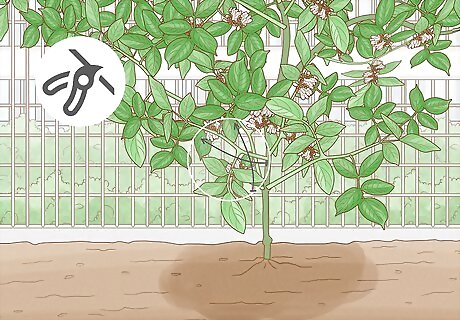
Remove tangled stems at the top of the vine. The top portion of the vine tends to be more tangled than the bottom, and cutting off stems here promotes growth later in the season. Cut only the tangled stems, and work slowly at the bottom of the vine. If you want to redirect the vine, trim more off of one side of the plant to encourage growth in the opposite direction. Avoid trimming any stems from the bottom of younger plants, as this “old growth” tends to support the plant. Without it, the vine might die.
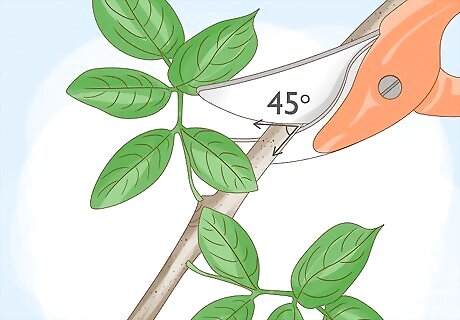
Use a pair of sharp pruning scissors to cut just above a leaf node. Leaf nodes are the part of a stem where the leaf begins to form from a “parent stem.” Hold your scissors at a 45-degree angle at the node, and make a clean cut all the way across the stem. No matter where you’re cutting, use this technique to prevent diseases and pests from overtaking the vine.
Trimming an Overgrown Honeysuckle
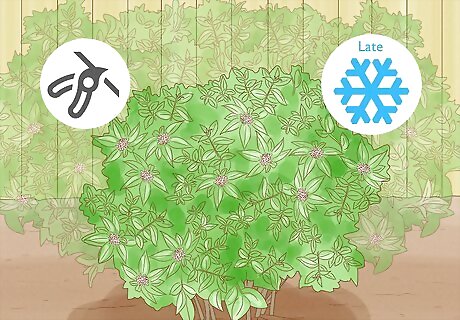
Wait until the winter to prune overgrown honeysuckle. During the winter, the honeysuckle bushes and vines are dormant, and more severe pruning won’t harm the plant. Aim for early winter to avoid the flowering period, but pruning in late winter is also acceptable, as long as the plant does not have any new growth. Pruning in the winter also tends to increase flowering in the following years because the branches can heal completely before blooming. Avoid severely pruning honeysuckle more than 1 time every 2-3 winters. Over pruning could kill the bush.
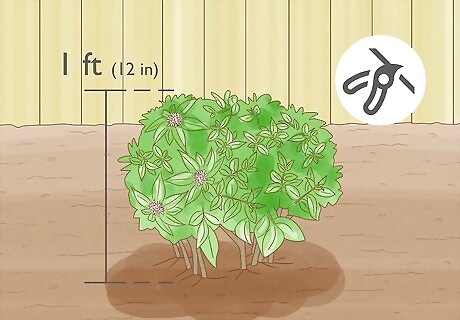
Cut severely overgrown plants within 1 ft (0.30 m) of the ground. Using a hand saw or loppers, trim all of the stems so that just 1 ft (0.30 m) of growth remains. It will continue to grow, but the plant will not produce flowers for another 1-3 years. In this case, it’s okay to cut even the oldest and thickest branches. They will make up the majority of the remaining bush and will produce new growth in the following years.
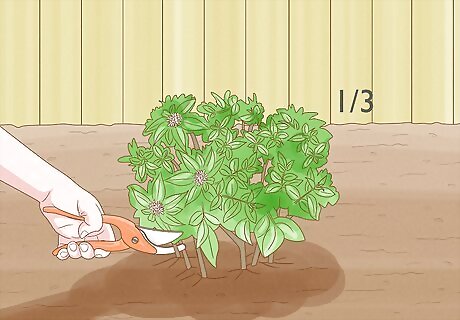
Remove only ⅓ of the branches if you want the plant to bloom that year. For a more gradual rejuvenation of the plant, remove only ⅓ of the branches, starting at the top of the bush and working to the bottom. The plant will still produce flowers from its remaining branches in the following spring. In this case, you will remove ⅓ of the branches each winter for 3 years in a row, until the bush is a reasonable size.











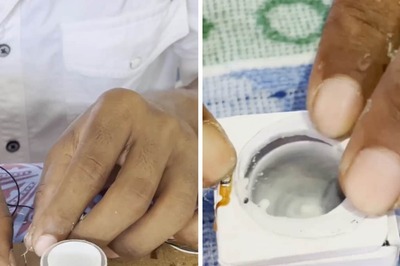






Comments
0 comment